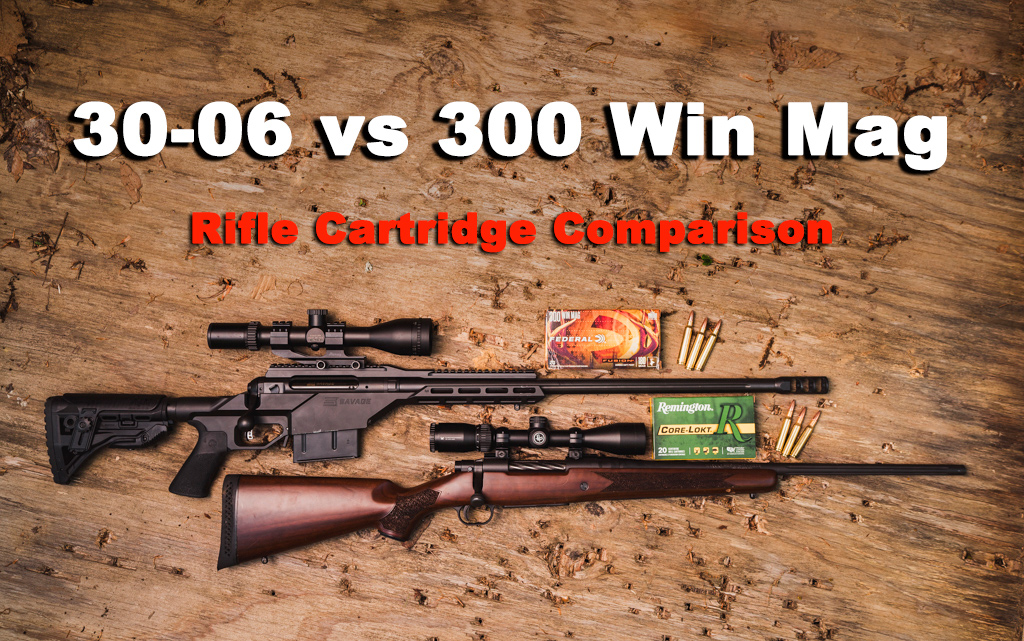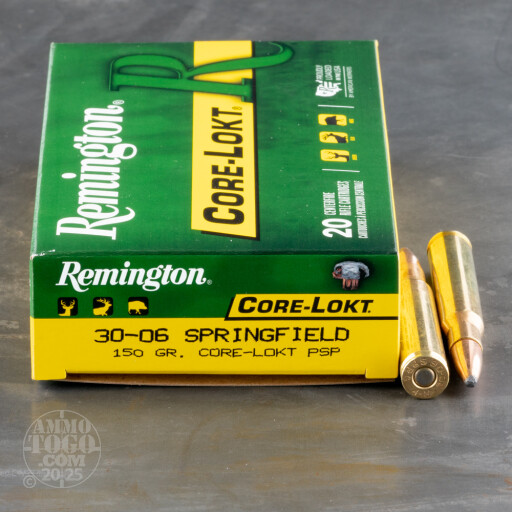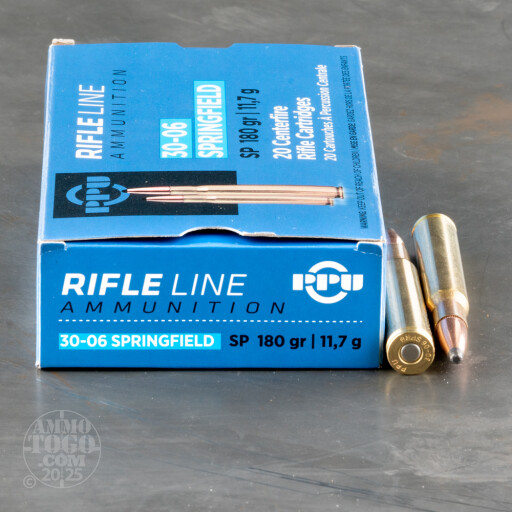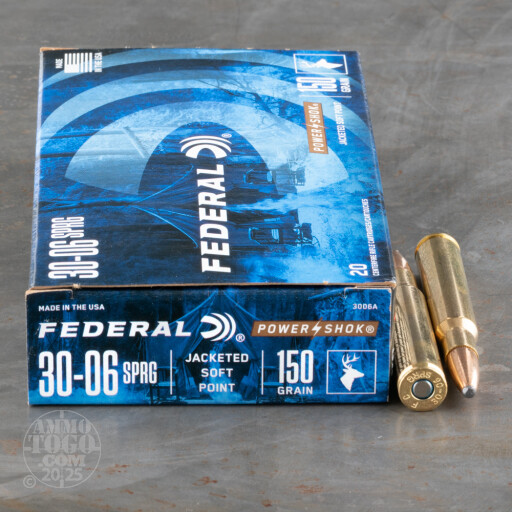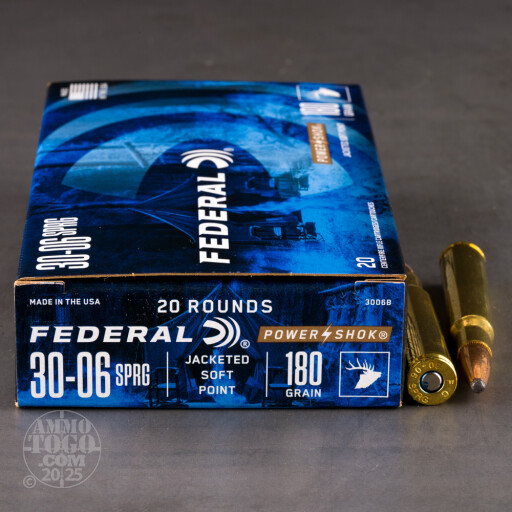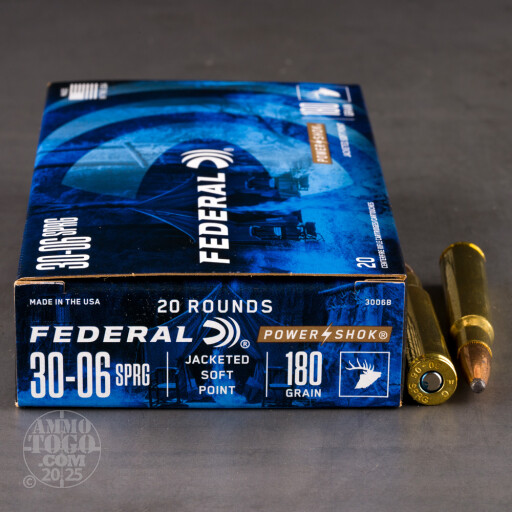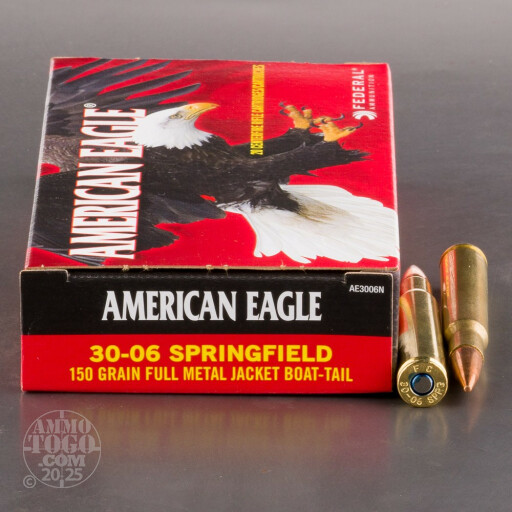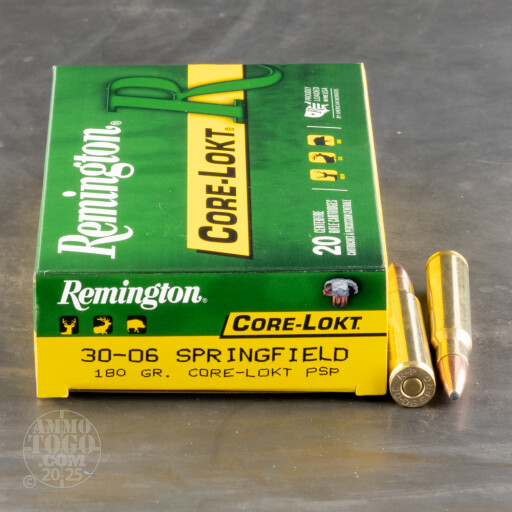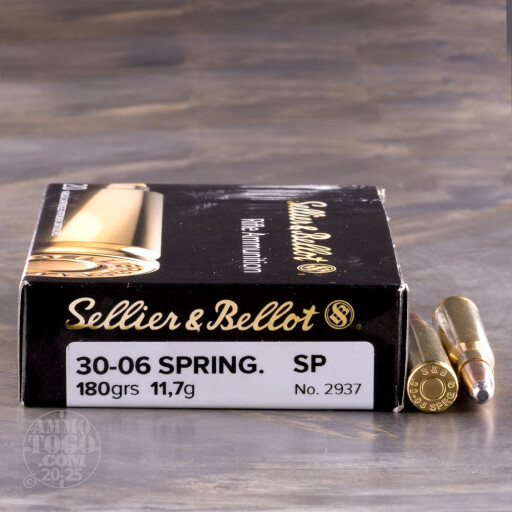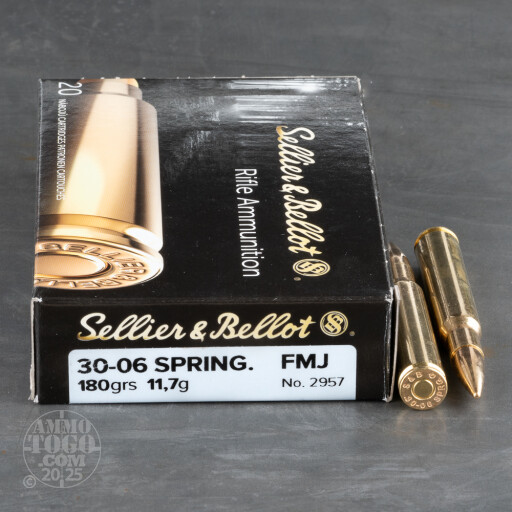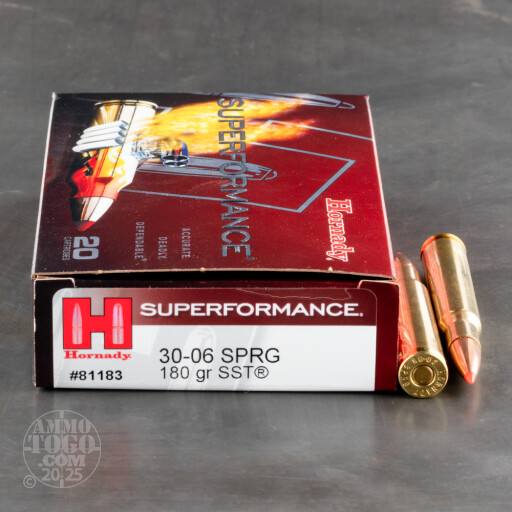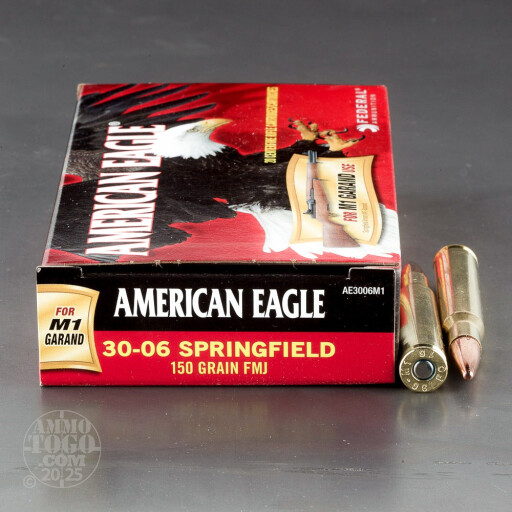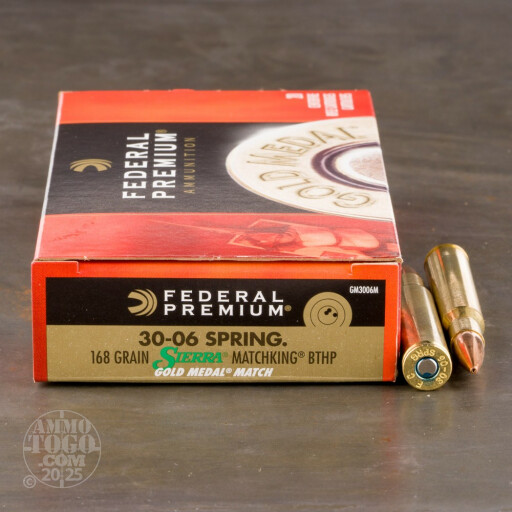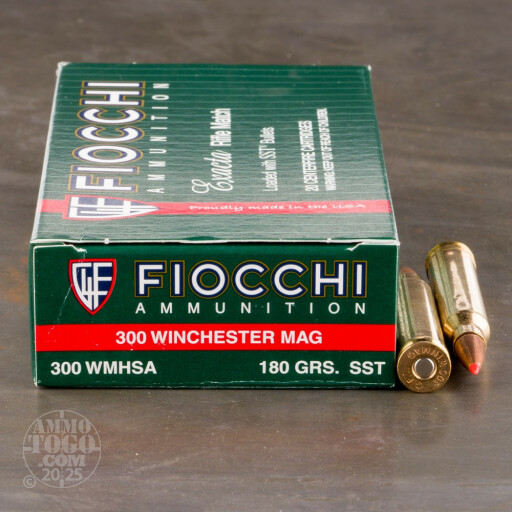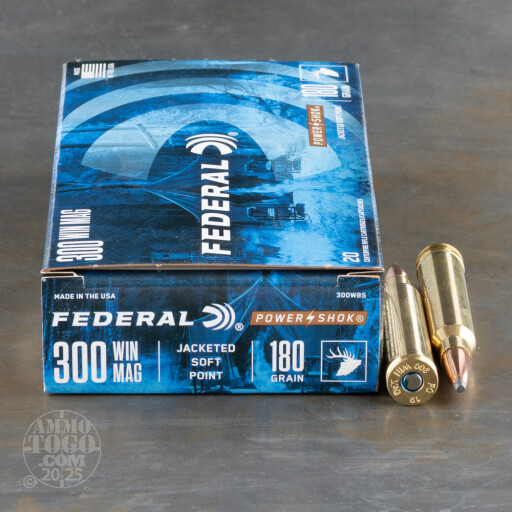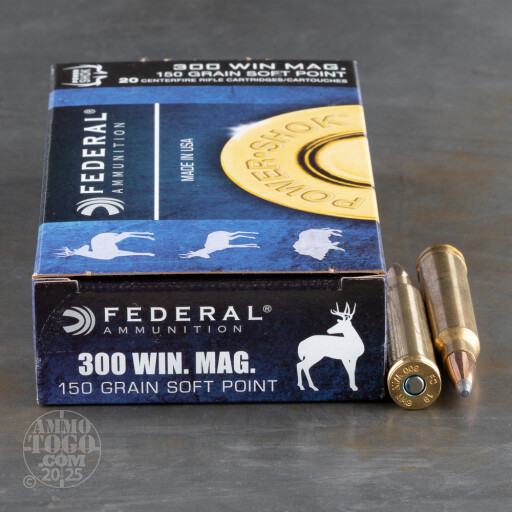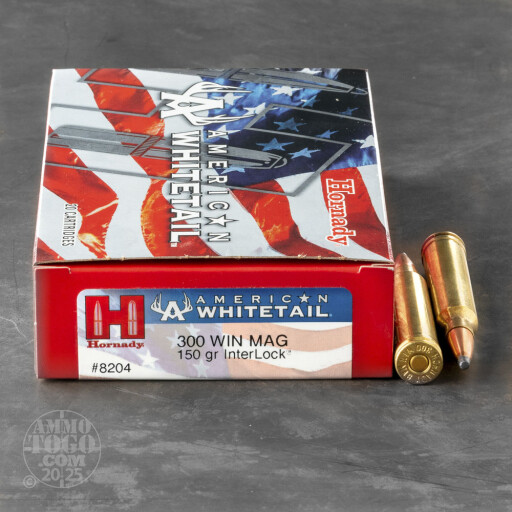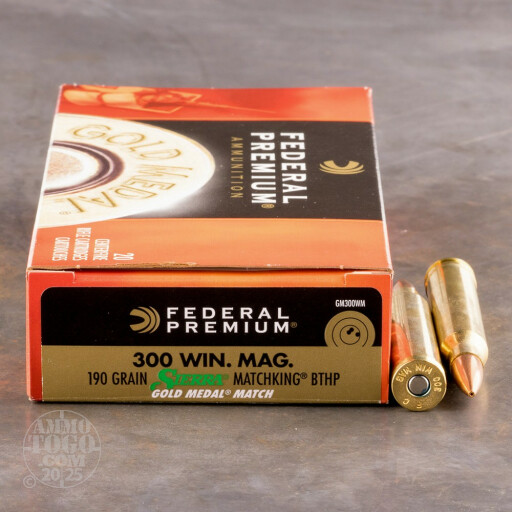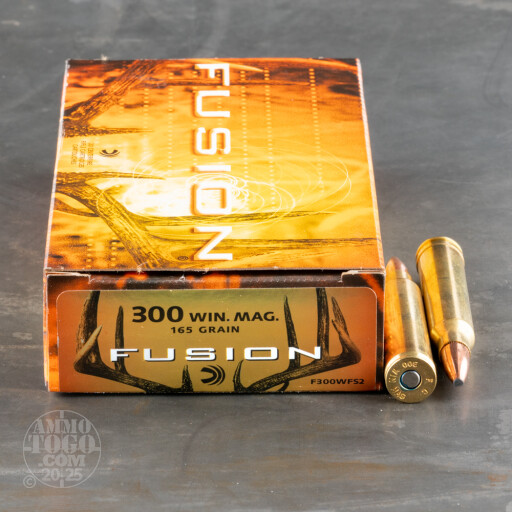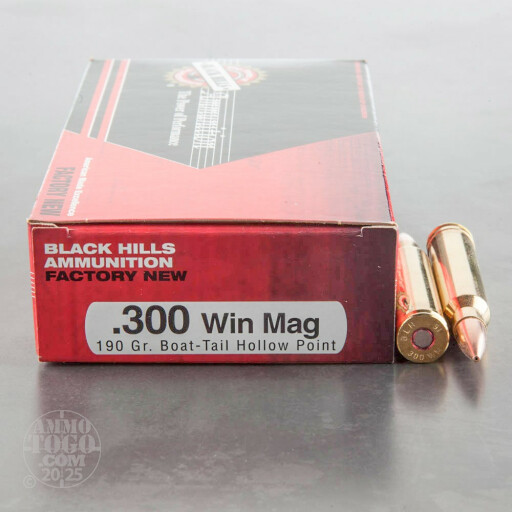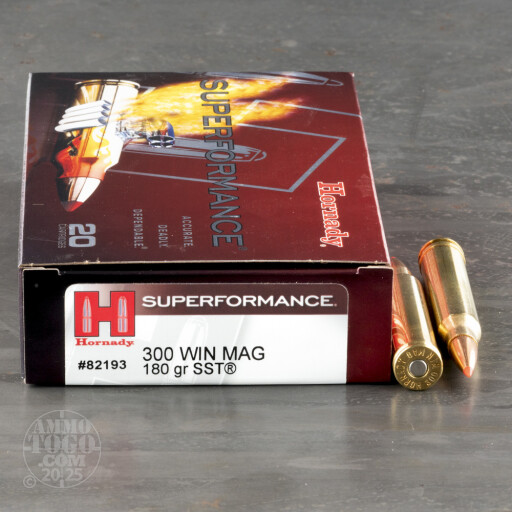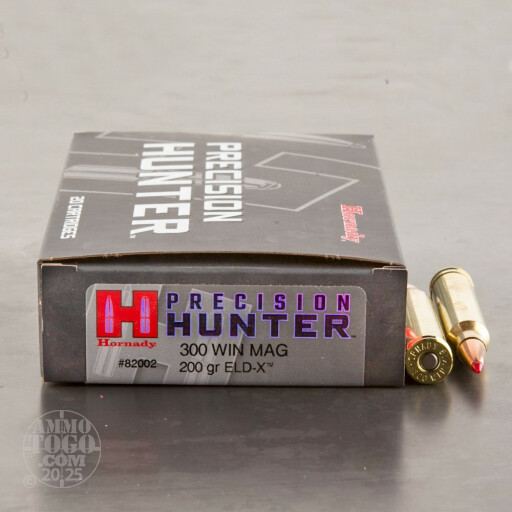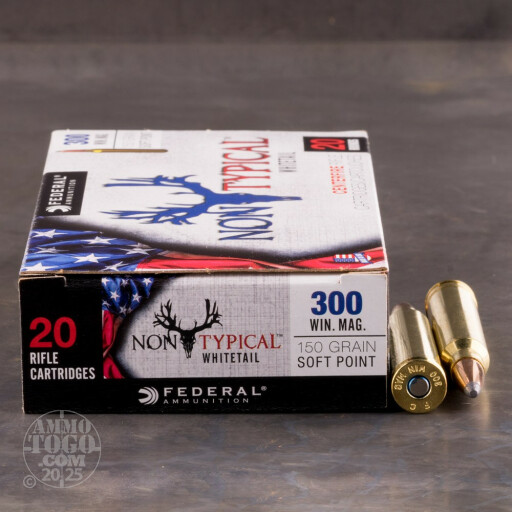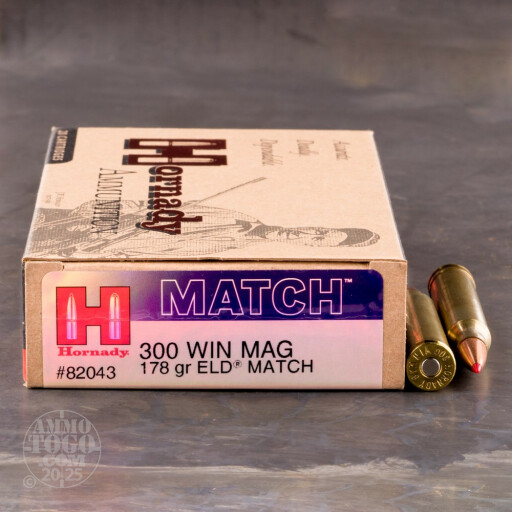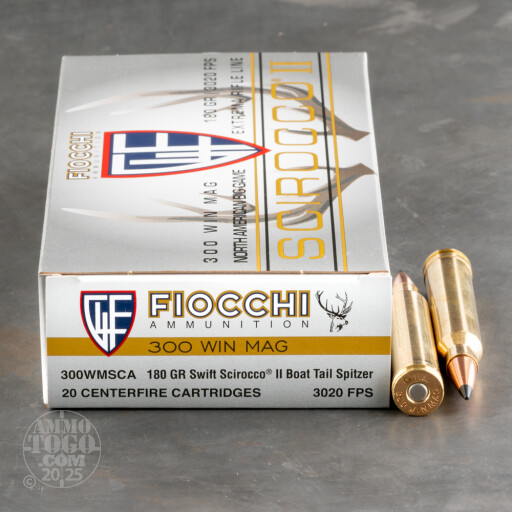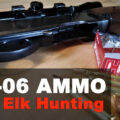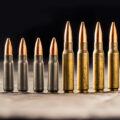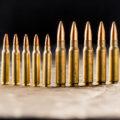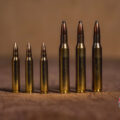An in-depth comparison of 30-06 vs 300 Win Mag exploring ballistics, recoil, and more.
In this article, we’re going to take a look at two of the most popular big game cartridges in current production – the .30-06 Springfield and the .300 Winchester Magnum. We can’t promise to crown one of them King of the .30-caliber Cartridges by the end of this. However, we promise to delve deep into what makes each one effective, so you can make an informed decision of your own.
The Cartridge Backstories
To better understand any cartridge, it’s important to know where it came from. Let’s take a peek at each one’s backstory.
A Brief History of the .30-06 Springfield
The enduringly popular .30-06 (pronounced “thirty-aught-six”) cartridge has roots in America’s military. Introduced in 1906 and originally called the “.30 Gov’t ‘06, the .30-06 Springfield cartridge was the US Army’s primary rifle and machine gun cartridge for more than 50 years.
This cartridge remained in use well into the 1970s and saw action in World War I, World War II, and the Korean and Vietnam Wars.
This is the cartridge famed Marine sniper Carlos Hathcock II (best known as the “White Feather Sniper” of the Vietnam War) used in his military sniping rifle. Hathcock’s second-longest sniper shot (1,200 yards) was made with a .30-06 Springfield. He also used his .30-06 to win the Wimbledon Cup in 1965.
The .30-06 was nearly perfect for military use. It has a simple design, feeds well in both bolt action and semi-automatic rifles, and produces admirable ballistics, consistent accuracy, and effective terminal performance.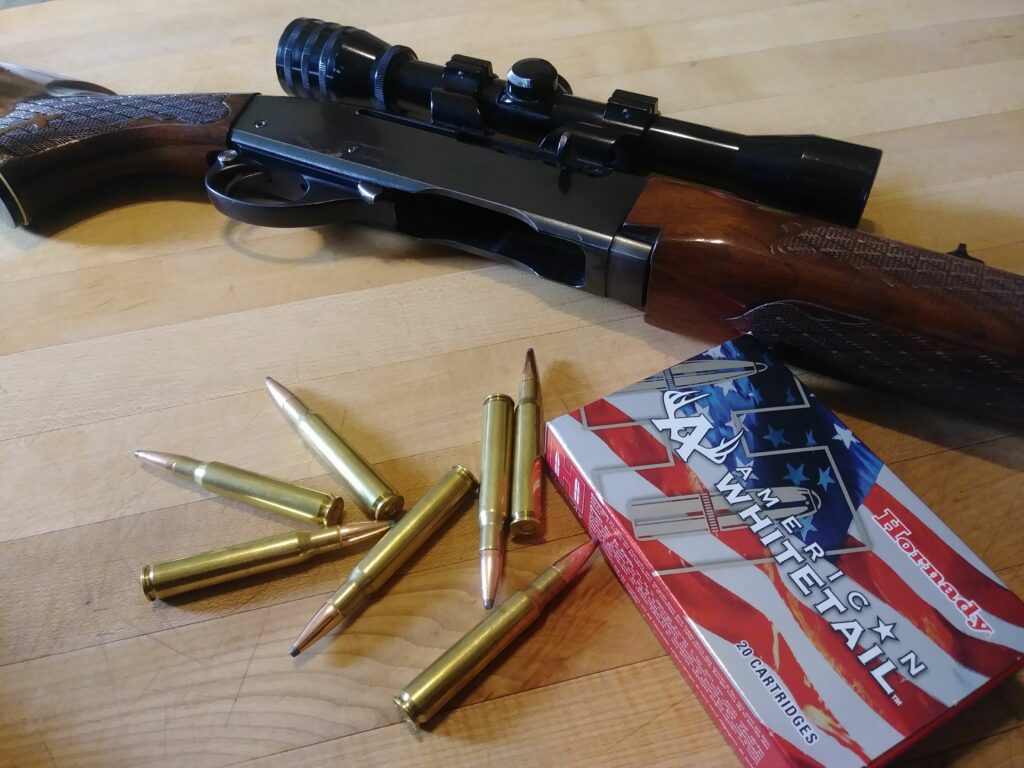
When American servicemen returned stateside, it made perfect sense for them to grab their trusty and familiar aught-sixes when they headed off into the deer woods. The qualities that made this cartridge perfect for battle, also make it perfect for hunting.
When it comes to hunting, .30-06 remains the number one choice for whitetails in the United States. However, it has also killed every big game animal in North America and plenty of others in Australia, Asia, and Africa.
A Brief History of the .300 Winchester Magnum
The .300 Win Mag (also known as .300WM or 7.62x67mmB) is much younger than the aught-six. Developed by Winchester Repeating Arms and released in 1963, this cartridge was part of the big magnum craze of the 20th century.
Basically a .375 H&H Magnum that has been shortened, blown out, and necked down to hold a .30 caliber projectile, the .330WM is incredibly popular for long-range shooting. In fact, it is a sweetheart for deer hunters looking to stretch shots across sweeping agricultural fields. The .300 Win Mag has also been used by military snipers around the world. 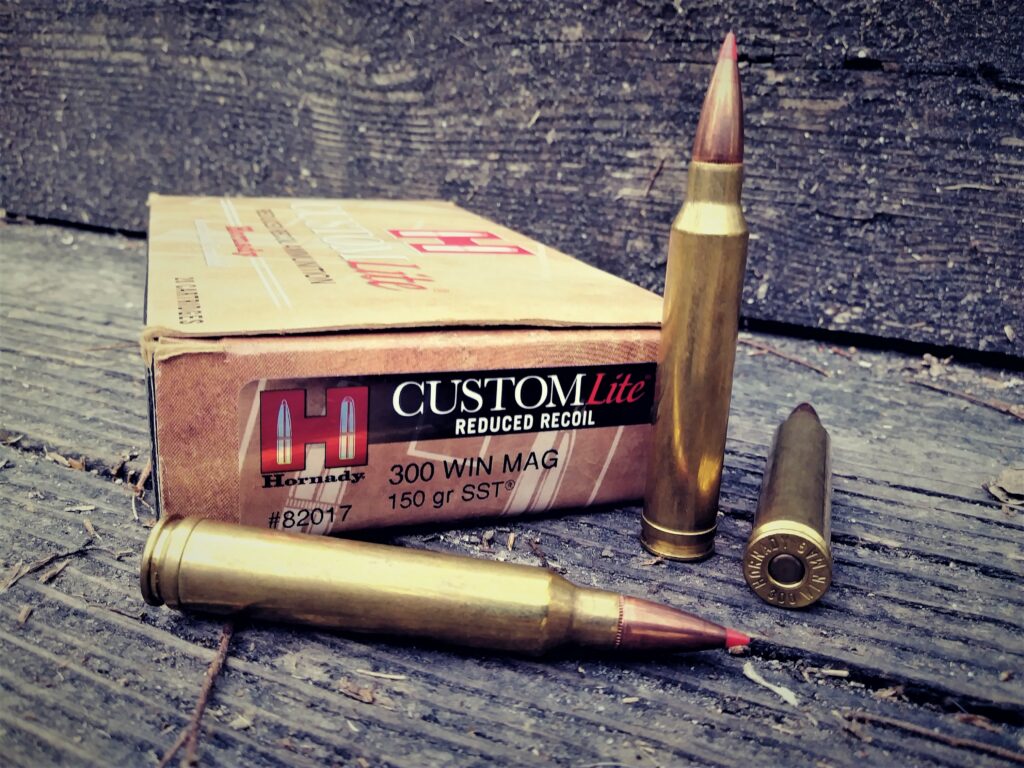
A Closer Look at the Specs
Here’s a side-by-side comparison of each of these cartridges’ specs.
| .30-06 Springfield | .300 Winchester Magnum | |
| Parent Case | .30-03 Springfield | .375 H&H Magnum |
| Projectile diameter | .308 inches | .308 inches |
| Projectile weight | 150-220 grains | 165-220 grains |
| Neck diameter | .340 inches | .339 inches |
| Shoulder diameter | .441 inches | .489 inches |
| Base diameter | .471 inches | .513 inches |
| Case length | 2.484 inches | 2.62 inches |
| Overall length | 3.34 inches | 3.34 inches |
| Case capacity | 68 grains | 93.8 grains |
| Max pressure (SAAMI) | 60,190 psi | 64,000 psi |
Velocity Comparison
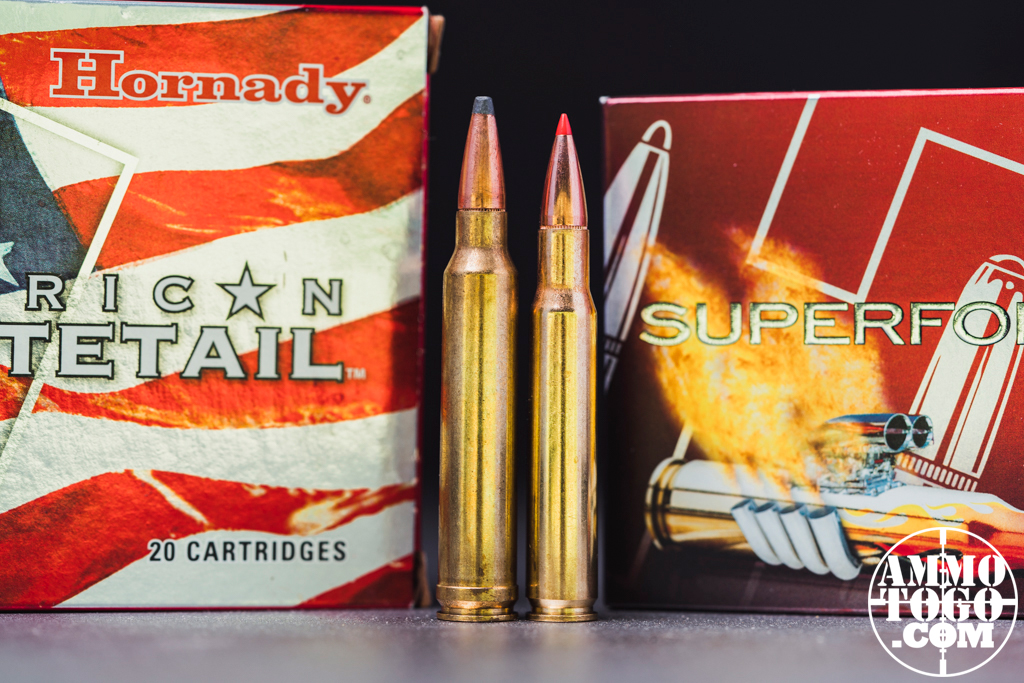
Speed is a huge selling point for any cartridge, and for good reason. Bullet velocity plays a key role in both in-flight and terminal ballistics. Although speed isn’t the only factor at play, it does affect trajectory, wind drift, penetration, and expansion. At longer-ranges, velocity can also have a major impact on accuracy.
Although .30-06 and .300 Win Mag cartridges are the same length and are topped with the same caliber bullet, the case dimensions are quite different. Stand these two side-by-side, and even the untrained eye can tell the difference.
The .300 Win Mag definitely has the chunkier case, which means it has significantly more room for powder. More powder means more pressure, and more pressure means the projectiles exit the muzzle at much faster velocities.
I took a wide sampling of loads and did some major number crunching, and discovered the .30-06 has an average muzzle velocity of 2695.8 fps, which is definitely respectable.
However, the .300 Win Mag averages a zippier 3102.8 fps. That’s 407 feet per second faster than the venerable aught-six.
If we’re judging on speed alone, .300 Win Mag is the obvious winner.
Trajectory
Trajectory is a fancy word for “flight path.” From the muzzle to the target, gravity exerts its ever-present force on any object traveling through the air, even fast-flying bullets. Gravity causes the flight path to arc over distance. This arcing path is trajectory.
There are several factors that influence a bullet’s trajectory, including its shape, weight, and velocity, as well as external elements like wind, atmospheric pressure, temperature, and humidity.
Because .300 Win Mag ammo can generally push a 180-grain projectile significantly faster than .30-06 manages to shove 150-grains, the trajectory of the.300 Win Mag tends to be slightly flatter.
Even when we make efforts to compare apples to apples, .300 Win Mag comes out on top in terms of trajectory. Let’s take a closer look at each cartridge’s bullet drop.
| .30-06 Springfield | .300 Win Mag | |
| Projectile | 168-grain Barnes TTSX-BT | 165-grain Barnes TTSX-BT |
| Muzzle Velocity | 3031 fps | 3567 fps |
| Bullet drop – 100 yards | +1.7 inches | +1.3 inches |
| Bullet drop – 200 yards | 0 inches | 0 inches |
| Bullet drop – 300 yards | -7.4 inches | -6.1 inches |
| Bullet drop – 400 yards | -21.5 inches | -17.9 inches |
| Bullet drop – 500 yards | -43.4 inches | -36.3 inches |
That pancake trajectory makes the .300 Win Mag more forgiving of minor errors in range estimation.
Thus, we crown the 300 Win Mag king in the trajectory category relative to 30-06.
Accuracy
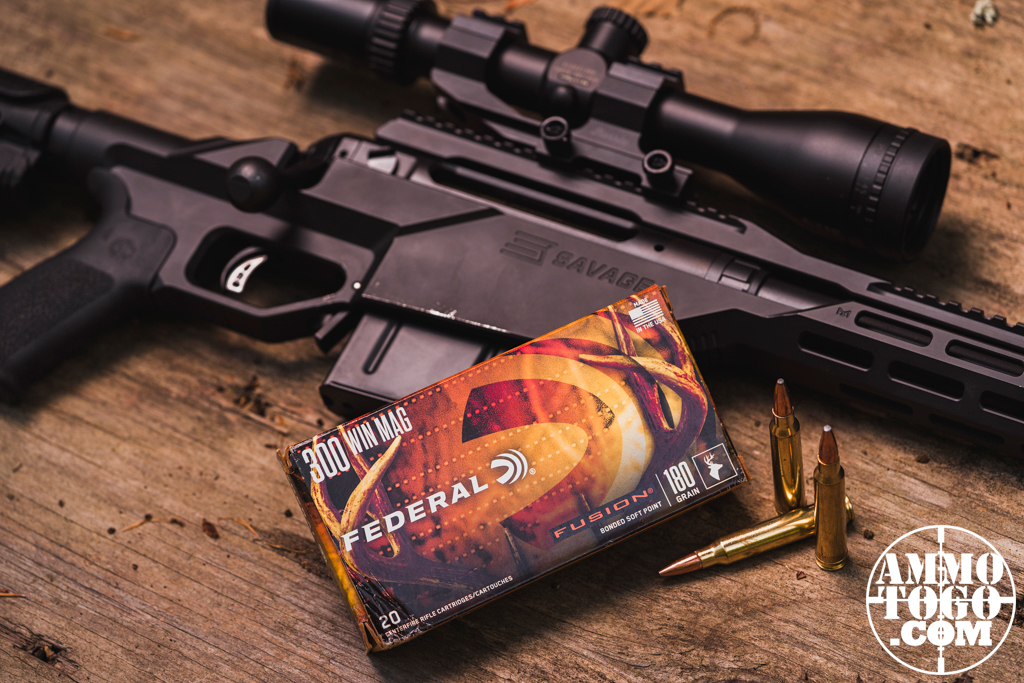
Like beauty lies in the eye of the beholder, accuracy lies in the skills of whoever holds the rifle. But shooters love to discuss cartridge accuracy, so here we go.
Accuracy depends greatly on consistency. Strict consistency of form, like those used by professional snipers and world-class competitors, will work more downrange magic than cartridge selection. If you want to be an accurate long-range shooter, you should spend more time mastering the fundamentals than worrying about cartridges.
Consistency also varies from load to load. Some loads are held to more exacting standards than others, and therefore perform more consistently. If you want tack-driving accuracy, you’ll need consistent loads, and those loads tend to come with higher price tags.
However, both cartridges have reputations of being pretty freakin’ accurate. Both cartridges have been used by police and military snipers (usually chambered in custom Remington 700s).
Both cartridges have also been used to win serious long-range shooting competitions, including NRA high-power matches and the Wimbledon Cup.
Which cartridge is “more accurate.” It honestly depends on which one you can shoot better. We’re going to call this one a draw.
Terminal Ballistics
What a bullet does once it makes it to the target is of prime importance to hunters, especially those pursuing big game at longer distances. If your bullet reaches the target, but fails to drive deep enough to reach vital organs once it gets there, it isn’t going to help you punch tags. Penetration is even more important when you’re hunting larger game animals with thick hides, tough muscles, and rock-hard bones.
So how does .30-06 and .300 Win Mag measure up in terms of penetration?
That depends.
With so many modern advances in bullet technology, the projectile’s design really plays a bigger role in terminal performance than the cartridge that fired it.
There are some .30-06 ammo options that penetrate deeper and expand more reliably than some .300 Win Mag loads. There are also plenty of .300 Win Mag loads that offer better penetration and expansion than some .30-06 loads.
If we were forced at gunpoint to declare a victor in this area, we’d begrudgingly give a slight edge to .300 Win Mag. The heavier bullet weights and faster velocities should, under most circumstances, drive deeper in soft tissue. However, there’s an awful lot of variables to take into consideration here.
The bottom line: Both cartridges have proven their effectiveness for harvesting nearly every game animal on Planet Earth.
Recoil
Extra pressure and extra speed come at a cost.
“For every action, there is an equal and opposite reaction,” as our old friend, Newton once said.
For shooters, that opposite reaction is called “recoil.”
According to Chuck Hawk’s Recoil Table, a 150-grain bullet fired from an 8-lb, .30-06 rifle produces 17.6 ft/lbs of recoil energy. Meanwhile, an 8-pound rifle chambered in .300 Win Mag firing a 165-grain bullet will pound your shoulder with 26.2 ft/lbs of recoil energy. That’s a significant difference in recoil, even for the big, beefy macho guys at the rifle range.
Why Recoil Matters
Some shooters can handle an ‘06 without so much as a sigh, but fall apart when handed a .300 Win Mag. (It’s me. I’m “some shooters”.)
While it’s easy to poke fun at the recoil sensitive, .300 Win Mag can do a number on your shoulder, even for the brave and unwavering.
Because the .300 Win Mag produces some hefty recoil, it can make for a rather unpleasant day at the range. It can be tempting to wrap up a shooting session before you’ve adequately zeroed your optic or before you’ve polished up your shooting proficiency. It can also lead to problematic flinching or recoil anticipation, which can have serious negative effects downrange.
Recoil can also affect the accuracy of your follow-up shots. Recovering from that first shot with .300 Win Mag can take a hot minute. Getting the nose back on target quickly and accurately often means the difference between punching a tag and leaving an injured buck in the woods to die a long, miserable death.
If you’re dead set on shooting the .300 Win Mag, go for a heavier rifle. Look for one that weighs at least nine pounds. While that might feel like serious weight when you’re hiking around the backcountry, I promise your shoulder will thank you for it. Plus, you’ll be much more accurate on those follow-up shots.
While we’re crowning category winners, .30-06 earns a sweeping victory in this one.
Price and Availability
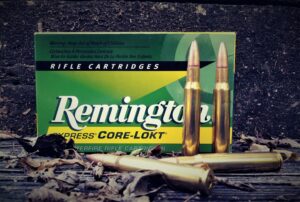 There might be a major ammo manufacturer out there somewhere that doesn’t make .30-06 loads. If there is, we don’t know who they are.
There might be a major ammo manufacturer out there somewhere that doesn’t make .30-06 loads. If there is, we don’t know who they are.
Aught-six loads might be the most widely distributed centerfire cartridge in the world. It is available in every price range and comes topped with a nearly endless variety of bullet designs.
These loads also run the gamut of quality. From super cheap to hand-inspected match-grade ammo, there’s a .30-06 load for just about everything.
.30-06 Springfield definitely takes gold in the price and availability categories.
In Conclusion
Despite the impressive speed and terminal ballistics of the .300 Win Mag, if I was forced to pick a favorite, I wouldn’t hesitate to say it’s the .30-06. It does everything it needs to do and has proven its effectiveness on pretty much every big game animal that calls Mother Earth home. It’s affordable, easy to find (ammo shortages aside), and has recoil that all but the most sensitive shooters can handle easily.
The .300 Win Mag is an exceptional cartridge, don’t get me wrong. However, it doesn’t offer much over the .30-06 until you try to stretch your range beyond typical whitetail shot opportunities. It’s really a long-range specialty cartridge. If you need to peg whitetails, elk, moose, or mulies beyond 450 yards, it could be worth it. Otherwise, you might want to stick with Grandpa’s old standby – the venerable .30-06 Springfield.
